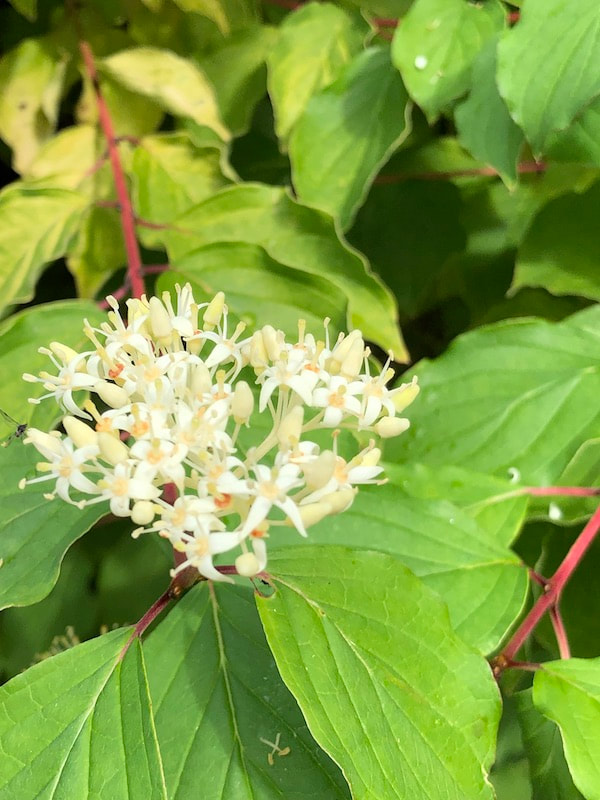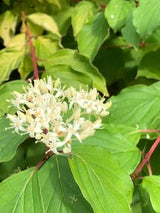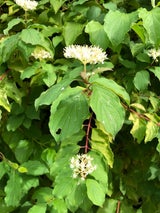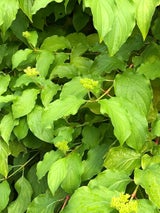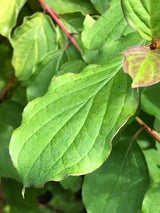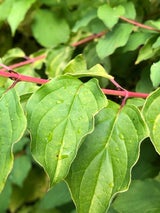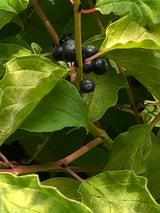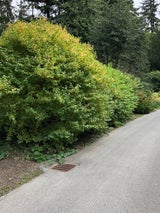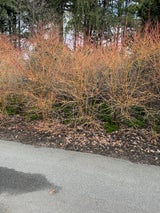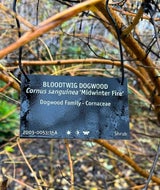- Plant IDs
- >
- ID By Type
- >
- Trees
- >
- Deciduous Trees
- >
- Dogwoods
- >
- Cornus sanguinea 'Midwinter Fire'
Cornus sanguinea 'Midwinter Fire'
Common name: Bloodtwig dogwood
Cornus sanguinea ' Midwinter Fire' is a hardy, multi-stemmed shrub in the family Cornaceae (dogwood) native to Europe and western Asia. It was discovered in a German garden by H. Venhorst in about 1980, but wasn't given the cultivar name 'Midwinter Fire' until 1990. C. sanguinea 'Midwinter Fire' can grow as high as three metres (ten feet) tall. It spreads by suckering. and can fill in spaces if not pruned regularly.
Bloodtwig dogwood blooms in late spring. Small, rather ordinary looking, creamy white flowers appear at the ends of branches. These flowers are attractive to pollinating insects. As the flowers fade, they are followed by purple drupes (fruit) which mature in August and September. The fruit is enjoyed by birds and small mammals. Medium- green leaves that turn golden yellow in fall are villous (fuzzy) on both the upper and lower surfaces.
C. sanguinea 'Midwinter Fire' isn't fussy about soil type, bu, like many plants, needs average moisture and well-drained soil. It is highly tolerant of urban pollution. Because the new growth is the most colourful, maximum interest can be achieved with regular winter pruning. New stems display the best colour. Bloodtwig dogwood makes a good border plant or hedge.
The genus name is from Latin and means ' horn'. The specific epithet is from Latin also, and means blood red, referring to the reddish twigs and young stems. The cultivar name 'Midwinter Fire' is thought to be in reference to the yellow, orange, and red bare stems in winter which resemble a burning fire.
The photos were taken through various seasons. Cornus sanguinea 'Midwinter Fire' can be found in Bed 15A on the Winter Walk.
Text and photos by Kumi Sutcliffe
